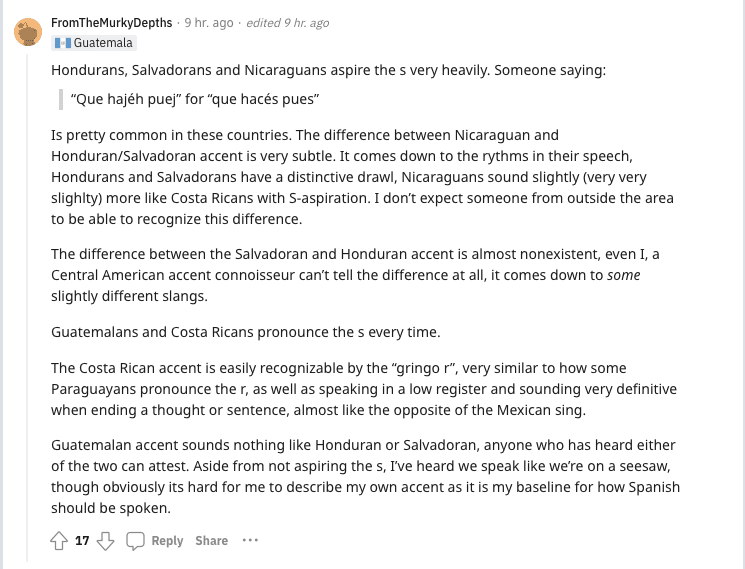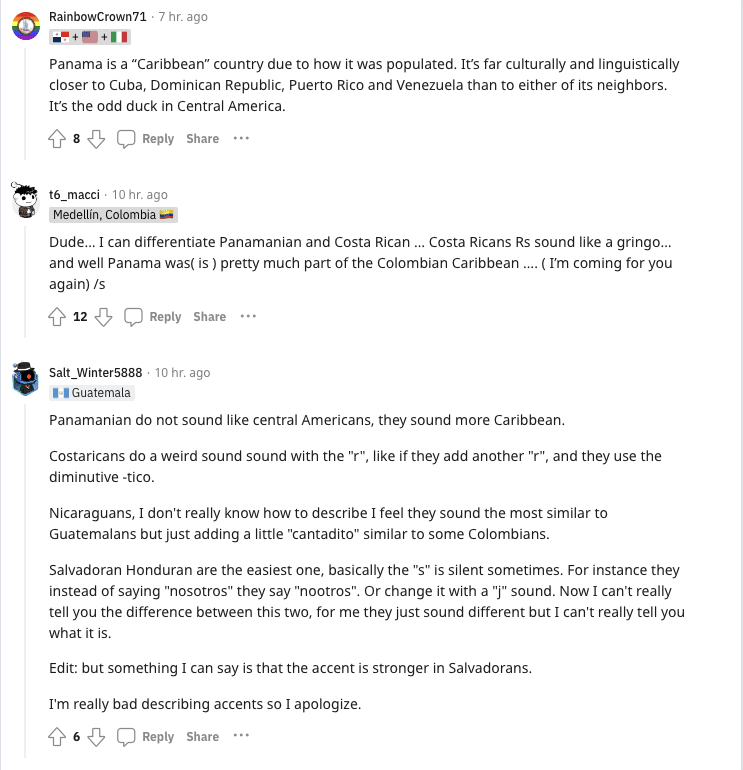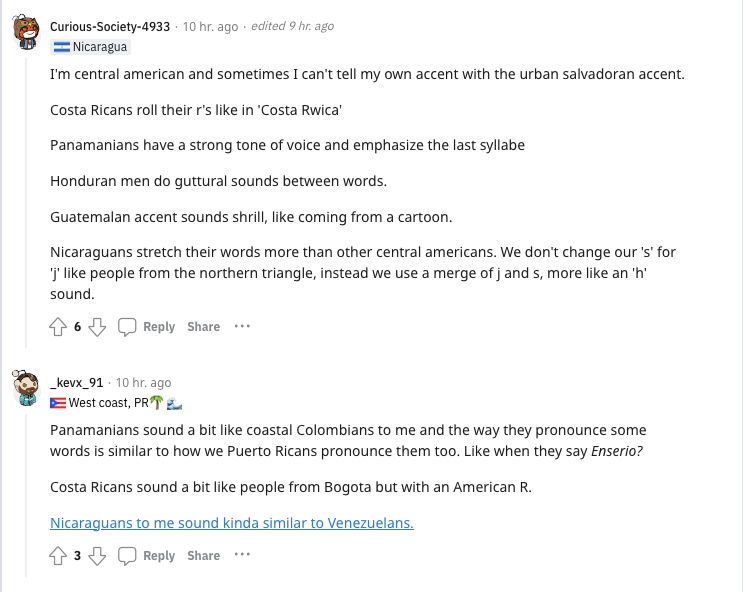People Try to Explain Latin American Accents to an English Speaker and the Struggle Is Real
Living in the United States sometimes divides the world in two — in Spanish and English. Years of struggling to make a place for ourselves in a society that minimizes us often puts priorities into perspective.
However, when non-Latinos understand that there is an entire continent that speaks and looks like us, their heads explode.
In fact, it is sometimes beautiful to see their eyes open to the incredible diversity and beauty we have in Latin America. However, trying to explain to them the different accents in the region is another ball game.
But the people in this Reddit thread are trying their best.

What is the difference between Salvadoran Spanish and Honduran Spanish, for example?
Let’s save the geography class for another day. These people have decided to explain to a user the difference between Caribbean and Central American accents.

Let’s think for a minute that there are more than 450 million native speakers spread over 21 countries. Each accent and dialect represents each country’s personality, evolution, and history.
For some, the Cuban accent is tough to follow. But how do you explain to a non-Latino that speaking with a Cuban accent is not the same as speaking with a Panamanian accent?
If you were born in Latin America, you know that our z, c, and especially r are not pronounced the same.

Accents are a matter of rhythm
Yes, just as we dance to different rhythms, our accents adopt a particular sonority.
The curious thing is that in the Caribbean, countries are less isolated and, therefore, share more sonorities.
However, to a non-Latino, listening to a Chilean or Argentine accent can sound like a language from another planet.

And when in doubt, the best solution is to travel
There is no better way to get to know and understand a culture than by immersing yourself in it.
To travel to Mexico is to understand that the Spanish spoken there is a product of the influence of Nahuatl and Purepecha. Similarly, Caribbean Spanish and accents have many words and sonorities from African, Taino, and Canary Island influences.

If you dare to travel further down, Amazonian Spanish is a beautiful interweaving of Quechua, Taino, and African languages. And the Spanish of the Andes has a deep root in the Quechua spoken by the Incas.
And the icing on the cake? Argentine Spanish has Italian influences. Isn’t this story fabulous?




